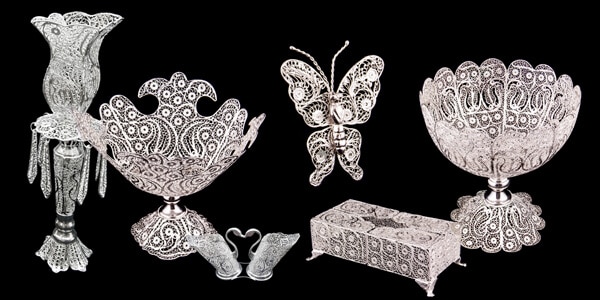Zanjan filigree
Malile Kari
Filigree is one of the most important applied arts in the province of Zanjan, which consists of welding silver and iron wires. Researchers have traced it back to 550-330 BC. Many filigree objects have been discovered in the treasures of Susa, Hamedan and Jeyhoun, proving that this handicraft has been practiced since ancient times.
Nowadays, most of the filigree articles are made of silver, meanwhile, other components are natural wax, aqua regia, alum and sulfuric acid. The tools used in filigree crafts closely resemble those used in goldsmithing. The first step of filigree is to pass silver, gold or copper sheets through the laminating machine in order to transform them into fine threads approximately 1 to 2 millimeters thick.
Currently, gold filigree is practiced to create jewelry such as earrings, rings, etc., and silver filigree to produce items such as trays, vases, jewelers and plates. The most common motifs used in the Zanjan filigree are buta, cypress, ivy, and flowers.



Comments